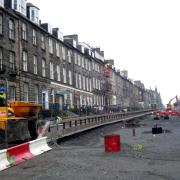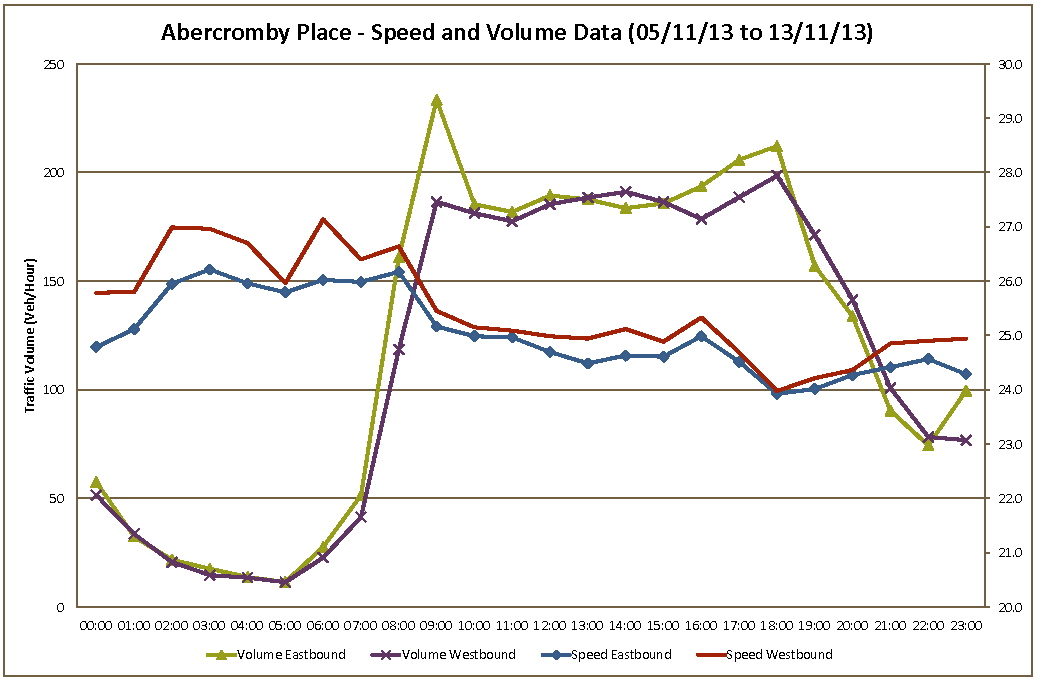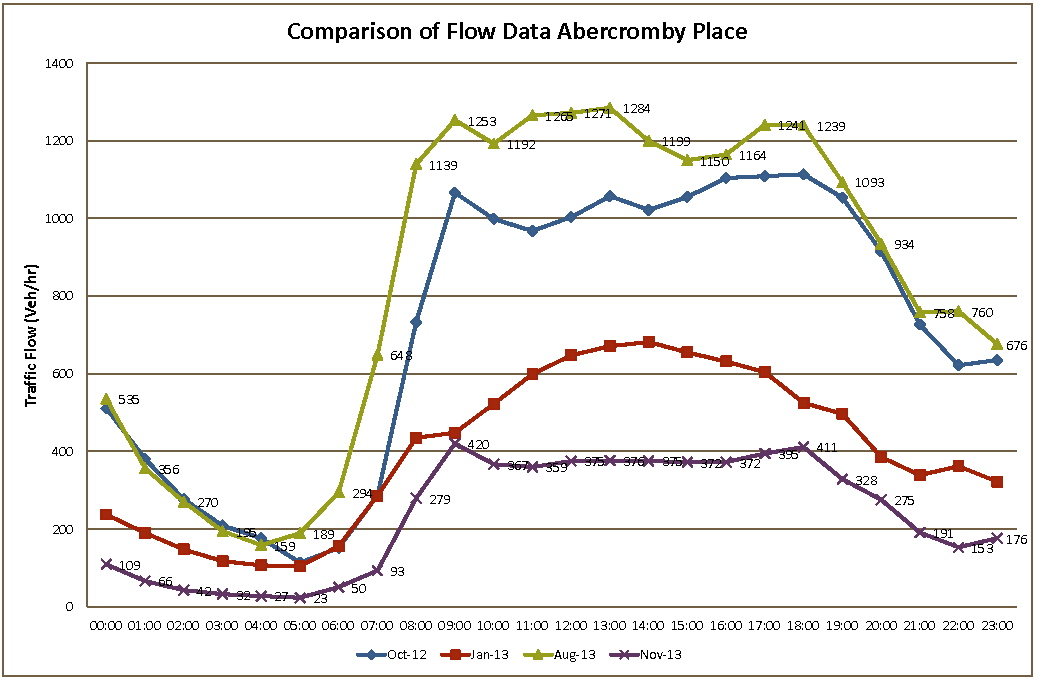
Alasdair Sim, the Council's Tram Interface Manager, spoke to the New Town & Broughton Community Council at its last meeting of the year on 2 December.
He was there to talk about the results of traffic monitoring in the New Town, where vehicle numbers and driver behaviour are beginning to settle down after the removal of tramworks-related diversions. He then moved on to related Council plans for the future.
The meeting was – as observers understand and have come to expect – dominated by residents of Abercromby Place (AP) and Albany Street (AS), who were worst affected by the re-routing of traffic which had formerly travelled along Queen Street and York Place. Some of them fear that life will never return to the tranquil standard they enjoyed before.
Below (and at the foot of the page) are 2 graphs which Sim circulated at the meeting. They show traffic behaviour for AP. (Unfortunately, other data are unavailable owing to faulty monitoring equipment.)


Based in part on these graphs, Sim then went on to to make the following points:
- From the statistics gathered, it is clear that traffic volumes on AP and AS are fairly consistent in both directions throughout the day. A ‘spike’ in eastbound volumes occurs during the morning peak, but no such spike appears for westbound traffic.
- Contrary to anecdotal accounts, there is no statistical evidence for a speeding problem on AP and AS.
- The graph indicates speeds are generally between 23 and 27 mph.
- Since no statistics were gathered before the tramwork diversions were put in place, it’s impossible to prove that ‘rat-running’ through the area has got any worse or indeed better.
- York Place is now running smoothly, despite the high volumes of traffic entering the St James Centre multi-storey car park for Christmas shopping.
- Council funds are available to resurface (a full overlay, not just patching) road surfaces damaged during the diversions. Timing of this work has yet to be confirmed.
- Roads will not be completely closed during resurfacing. Traffic light filters (on Howe and Dundas Streets) will allow some movement during the works, but inevitable delays may have the side effect of encouraging drivers to revert to using Queen Street and York Place.
- In response to residents’ calls for establishing ‘end-on’ parking on the garden side of Abercromby Place as a way of slowing traffic speeds, Sim repeated that there is no evidence of excess speeding here. The Council is not considering this option at present. (He agreed, though, that end-on parking does ‘calm’ traffic.)
- The Council is committed to reassessing traffic movements across the entire city, once the fully operating line from York Place to the Airport has had a chance to settle down. That would probably be in late 2014. As part of that process, the Council might consider a painted pavement blister near the junction of AP and Dundas St as a way of helping pedestrians to cross a narrower space with clearer sightlines.
What do you think about the figures, the conclusions based on them, and the Council's strategy for the future? Do they capture the reality of what's going on, or do New Town residents protest too much? Contact us by email spurtle@hotmail.co.uk on Facebook Broughton Spurtle or Twitter @theSpurtle
@theSpurtle Those 20mph advisory signs have been particularly effective, then? :-(
